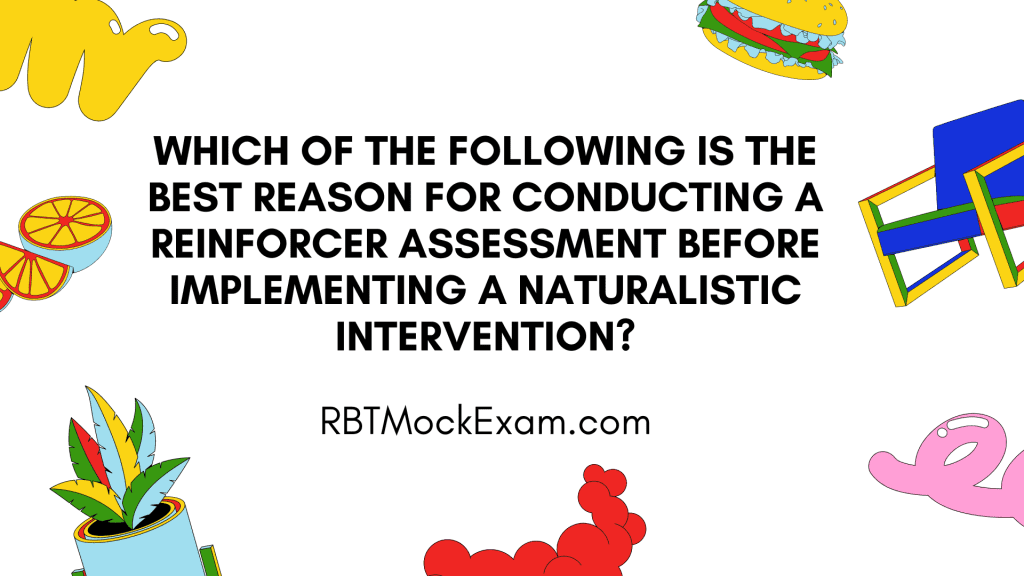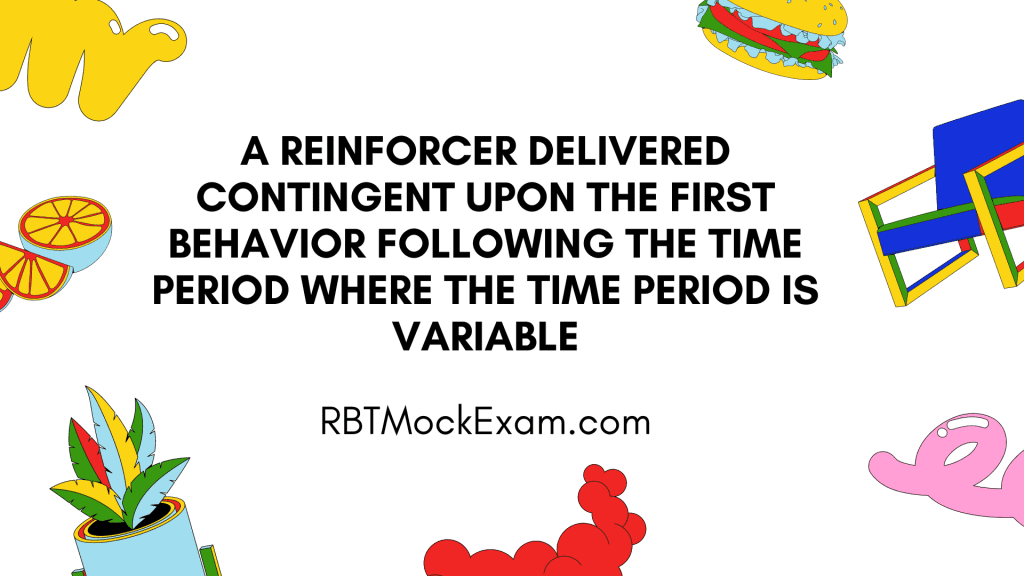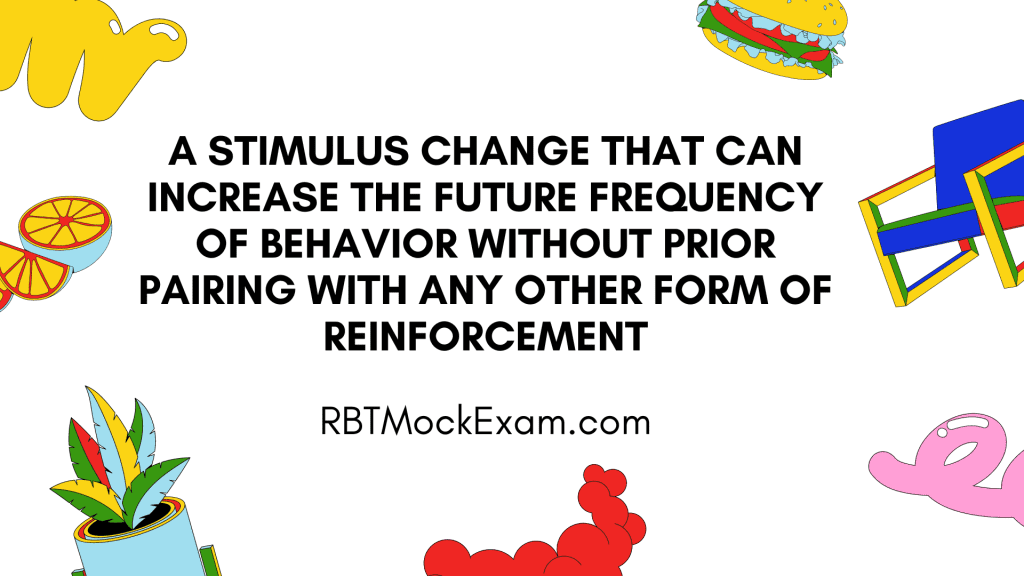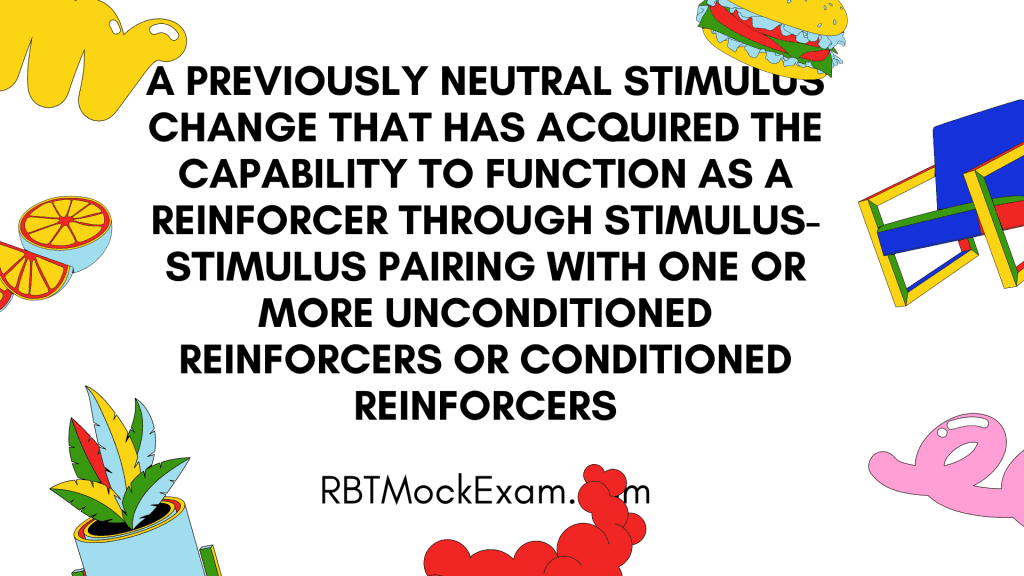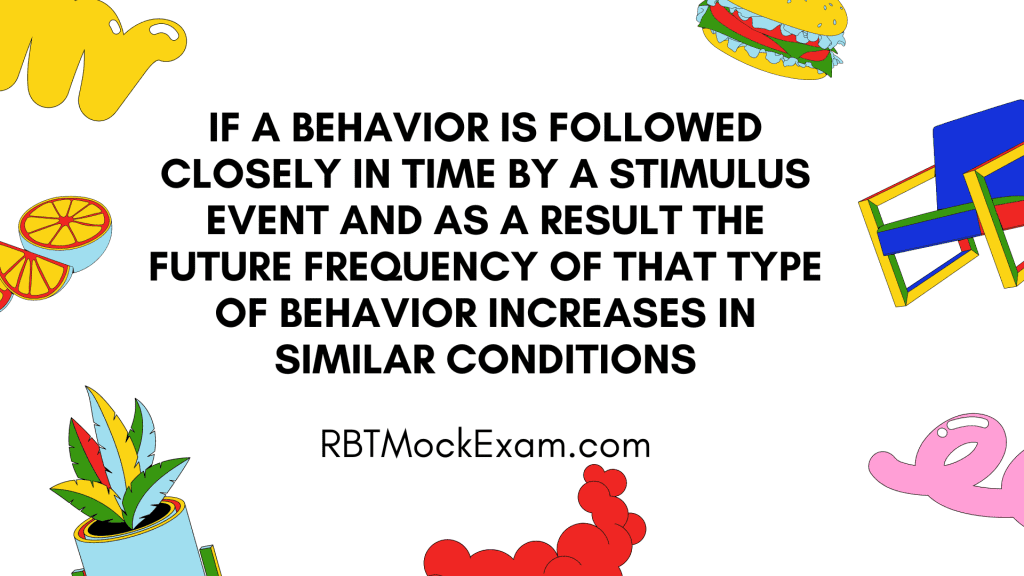Question: Which of the following is the best reason for conducting a reinforcer assessment before implementing a naturalistic intervention?
Options:
- To identify potential negative behaviors
- To determine the baseline level of behavior
- To know what to have available as reinforcers and possibly intervention materials
- To establish the intervention schedule
Correct Answer: 3. To know what to have available as reinforcers and possibly intervention materials
Explanation: Conducting a reinforcer assessment before implementing a naturalistic intervention is crucial because it helps identify what items or activities are effective as reinforcers for the individual. Knowing what is reinforcing allows practitioners to have these items readily available to increase the likelihood of desired behaviors. Additionally, identified reinforcers can also be used as intervention materials, making the intervention more engaging and effective.
Practice Tests On This Question
Reinforcer Assessment in Naturalistic Interventions
Individualization:
Reinforcer assessments are crucial for tailoring interventions to individual preferences and needs. What serves as a powerful reinforcer for one person may have little to no effect on another. For instance, while some children might be highly motivated by stickers or small toys, others might respond better to praise or extra playtime. By conducting a thorough assessment, practitioners can identify the most effective reinforcers for each individual, ensuring that the intervention is personalized and therefore more likely to succeed.
Efficiency:
Interventions can be significantly more efficient by identifying effective reinforcers beforehand. This pre-intervention step saves time and resources in the long run by avoiding the trial-and-error process during the actual intervention. When practitioners already know what motivates the individual, they can immediately implement these reinforcers, leading to quicker behavior change and skill acquisition. This efficiency is particularly important in naturalistic settings where time and resources might be limited.
Motivation:
Understanding an individual’s preferred reinforcers is key to maintaining motivation throughout the intervention process. Naturalistic interventions often require sustained engagement over extended periods, and using preferred reinforcers can help keep the individual interested and actively participating. This sustained motivation is crucial for the success of the intervention, especially when teaching new skills or modifying behaviors in real-world contexts.
Natural Environment:
In naturalistic interventions, the goal is often to teach skills that will generalize to everyday situations. By identifying naturally occurring reinforcers in the individual’s environment, practitioners can increase the likelihood of skill generalization. For example, if a child finds praise from peers reinforcing, this can be naturally incorporated into social skills training in a classroom setting, making it more likely that the learned skills will be used outside of the intervention context.
Hierarchy of Reinforcers:
Reinforcer assessments can help establish a hierarchy of preferred items or activities. This hierarchy is valuable for several reasons:
a) It allows for variety in reinforcement, preventing satiation or boredom with a single reinforcer.
b) It provides options for different levels of reinforcement based on the difficulty of the task or the quality of the response.
c) It allows practitioners to save highly preferred reinforcers for particularly challenging tasks or significant achievements.
Contextual Factors:
Reinforcer assessments can reveal how preferences might change based on different contexts or conditions. An individual might prefer different reinforcers at home versus at school, or when they’re tired versus energetic. Understanding these nuances allows practitioners to adjust reinforcement strategies based on the specific context of the intervention, enhancing its effectiveness across various settings and situations.
Ethical Considerations:
Ensuring that reinforcers are appropriate and not harmful is a critical part of ethical practice in behavior intervention. Reinforcer assessments help practitioners identify reinforcers that are not only effective but also align with ethical standards and the individual’s best interests. This process can also help avoid potential negative consequences, such as using food reinforcers for individuals with dietary restrictions or weight concerns.
Data-Driven Approach:
Reinforcer assessments provide empirical data to support intervention decisions, aligning with evidence-based practices. This data-driven approach adds credibility to the intervention strategy and can be valuable when communicating with other professionals, parents, or stakeholders about the rationale behind specific intervention choices.
Potential Barriers:
Through the assessment process, practitioners can identify potential challenges or barriers in using certain reinforcers. For example, if a highly preferred reinforcer is not always available or is difficult to incorporate into natural settings, this can be identified early. This foresight allows for proactive problem-solving and the development of alternative strategies before the intervention begins.
Collaboration:
The reinforcer assessment process often involves collaboration with caregivers, teachers, or other individuals who know the person well. This collaborative approach has several benefits:
a) It promotes buy-in from stakeholders, increasing the likelihood of consistent implementation across settings.
b) It provides a more comprehensive view of the individual’s preferences and motivations.
c) It can reveal reinforcers that might not be apparent in a single assessment session.
Flexibility and Reassessment:
Preferences for reinforcers can change over time due to factors such as development, new experiences, or changing interests. Regular reassessment allows for adjusting reinforcers to maintain their effectiveness. This flexibility is particularly important in long-term interventions or when working with children, whose preferences may change rapidly.
Cultural Sensitivity:
Reinforcer assessments provide an opportunity to ensure that interventions are culturally appropriate and respectful of individual or family values. What is considered reinforcing can vary significantly across cultures, and assessments help practitioners avoid assumptions and tailor interventions to be culturally sensitive and relevant.

